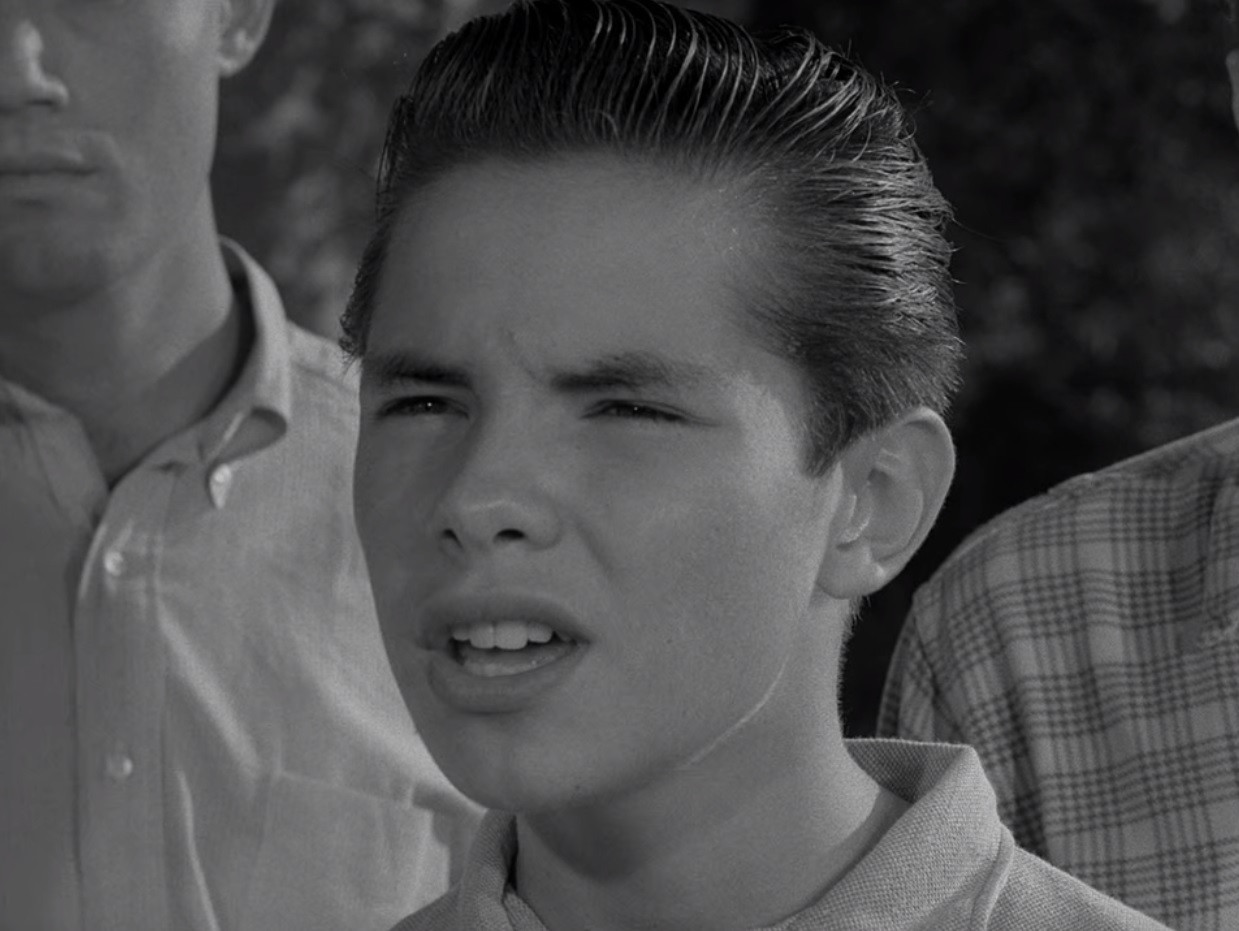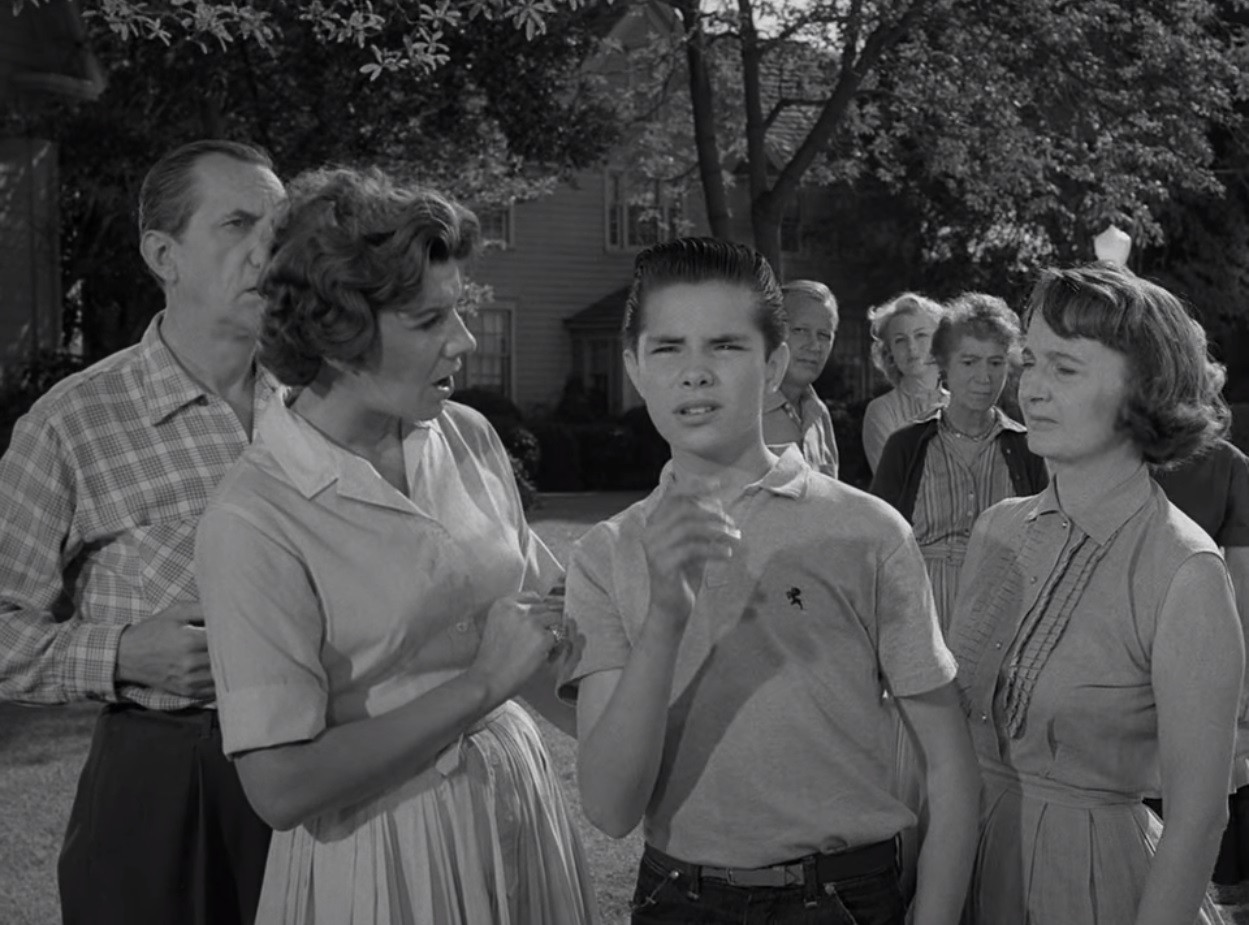Even for the most dedicated Twilight Zone aficionados, the name Jan Handzlik might not immediately ring a bell. However, mention “Tommy from ‘The Monsters Are Due on Maple Street,’” and recognition is instant. Tommy, the young boy whose comic-book fueled anxieties inadvertently ignited the neighborhood’s descent into paranoia, remains a pivotal figure in one of The Twilight Zone’s most enduring episodes.

While Tommy’s character might evoke mixed feelings among viewers for setting off the chain of events, it’s crucial to remember he was just a 12-year-old, voicing innocent, if perhaps ill-timed, observations. The true catalyst for the chaos was the adults’ predisposition to suspicion and their alarming readiness to turn on each other.
Recently, a 2018 interview with Jan Handzlik surfaced on Noblemania, offering a fascinating glimpse into his Twilight Zone experience. Despite other acting roles, including a Broadway stint in Auntie Mame, the interview extensively explores his memories of filming this iconic episode. Here are some key highlights from that conversation, providing a unique perspective on “The Monsters Are Due on Maple Street.”
Becoming Tommy: A Child Actor in the Twilight Zone
Reflecting on his casting, Handzlik recalls being around 12 years old when he stepped into Tommy’s shoes. Asked about memorable moments from the set, he fondly remembers Jack Weston, who played Myron Renard, as a source of constant amusement. “Jack Weston was hilarious on stage and off,” Handzlik stated, emphasizing Weston’s ability to keep the atmosphere lighthearted amidst the episode’s tense themes.

Even on a tightly run production like The Twilight Zone, things didn’t always go according to plan. Handzlik shared anecdotes of minor on-set mishaps, such as lighting and technical cues going awry. These behind-the-scenes glimpses humanize the making of a show often perceived as flawlessly executed.
His memories of Rod Serling are particularly vivid. Handzlik recounts Serling’s presence at script readings, describing him as a “pretty serious guy” who was nonetheless engaged in the collaborative process, even making script adjustments on the spot. This paints a picture of Serling as a meticulous creator deeply invested in his craft, even during table reads.
The Message Endures: “Monsters Are Due on Maple Street”‘s Lasting Impact
Even as a young actor, Handzlik grasped the profound message embedded within “The Monsters Are Due on Maple Street.” He recognized that “almost every Twilight Zone had a message,” and his episode’s was particularly clear: “it was a situation where it didn’t take much for adults, neighbors, and in some cases close friends to turn against each other.” This early understanding highlights the episode’s effectiveness in conveying its social commentary even to its young cast members. He astutely observed the timeless relevance of the moral, noting, “we are our own worst enemies—as we have found out [again] in the last couple of years.”

The initial reactions to the episode, Handzlik recalls, were varied. Children found it “scary-funny and entertaining,” while adults immediately recognized the stark social message. This dual reception underscores the episode’s ability to resonate on multiple levels, entertaining younger audiences while prompting deeper reflection among adults. Its continued relevance, as Handzlik points out, speaks to the unfortunately persistent nature of the social dynamics it portrays.
The experience of being in such a popular and impactful show did leave a mark on young Handzlik. He acknowledged the social and psychological impact of being part of “a must-watch show for a lot of people.” He himself was already a fan of The Twilight Zone, but his personal involvement deepened his appreciation for the series.

Even his own children, Handzlik shares, find his Twilight Zone appearance “great,” though perhaps their attention spans are limited to “maybe 15 minutes” (he laughs). This lighthearted anecdote brings a touch of familial warmth to the episode’s legacy, showing its appeal across generations.
Reflecting on a Twilight Zone Legacy
Handzlik has occasionally participated in Twilight Zone events, recalling one convention where he was surprised to find himself signing autographs. He expresses openness to future events, particularly if he could bring his children along, suggesting a desire to share his Twilight Zone connection with his family.

He still watches “The Monsters Are Due on Maple Street,” often alerted to its airings during Twilight Zone marathons by friends. Despite not holding onto many mementos from the production, Handzlik cherishes the experience itself. He fondly remembers the talented cast, including Claude Akins and Jack Weston, and describes his Twilight Zone stint as “a very positive experience.”

In conclusion, Jan Handzlik’s reflections offer valuable insights into the making and enduring impact of “The Monsters Are Due on Maple Street.” His firsthand account humanizes the creation of this Twilight Zone classic and reinforces the episode’s timeless message about the dangers of paranoia and self-destruction. Tommy’s story, as told by the actor who embodied him, continues to resonate, reminding us that sometimes, the real monsters are indeed, due on Maple Street, and within ourselves.
For the full interview with Jan Handzlik, visit Noblemania.
